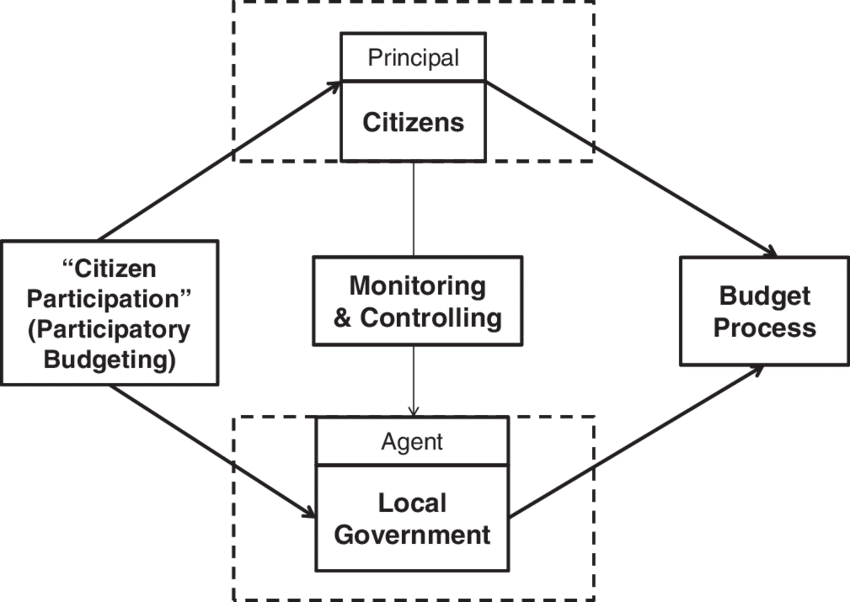At the very center of any nation are its communities. The concept of nation-building requires us all to get involved. You are already taking that big step by simply lending your voice to the community-driven initiatives near you.
This article discusses participatory budgeting, a core aspect of community building, and the critical steps to ensure an adequate participatory budget. So, let’s dig into it, shall we?
Are you looking to help your community through participatory budgeting? Instant Input can help you get started.
What is Participatory Budgeting?
The government is usually the “Big guy” in terms of the administration and the allocation of resources. However, in an all-inclusive form of democracy, participatory budgeting gives a voice to the public. It can best be described as a process allowing citizens to have a say on spending a part of a public budget.
In participatory budgeting, citizens are the major deciders of public spending since it was started in Porto Alegre, Brazil, in 1989 as a significant anti-poverty measure, especially after the end of the military dictatorship in Brazil.
Participatory budgeting subsequently helped to reduce child mortality by about 20%; over 7000 cities worldwide have adopted participatory budgeting, which has deepened the practice of democracy and allowed for an equitable distribution of public resources.
Importance of participatory budgeting?
We earlier described it as a form of practicing in inclusive democracy, but it goes further and is more profound than that. Public participation is vital to democracy, and the participation of the people in public policy is a means of making the governance ecosystem more transparent, inclusive, and accountable.
The concept of participatory budgeting may seem theoretical in terms of its applications, but it is evidenced in over 40 countries, and for the last 25 years, it has gained widespread support. If you want to be a part of the government decisions that affect your community, engaging in participatory budgeting is one way to do so.
Participatory budgeting encourages social mobilization around core governance issues, and it has also shown that people’s participation in local planning and effectively agreeing on the priority for public spending leads to better outcomes for everyone.
Do you want to get more involved in your community’s development? Instant Input provides you with credible insights to help you get started. Consider joining today.
Steps of an effective Participatory Budget
Now that we understand how important participatory budgeting is and how vital it is to practice an all-inclusive democracy and a development that improves the quality of life for everyone, there are steps to be taken in organizing an adequate participatory budget.
The allocation of a government budget aligns with the community’s demand, and the focus here is that everyone must be rightly involved. The eight principal steps of the budgeting process are highlighted below;
- Preparing the groundwork
- Informing the participants
- Collect the Community Input
- Process the Input
- Put it to a vote
- Close feedback
- Implement the critical changes.
- Repeat the cycle
II. How does Participatory Budgeting Work?

Image Credit: Schematic representation of citizen participation in the Process and Local Government Accountability – Case Studies of Organizational Learning from the United States and South Korea
The Role of Participatory Budgeting in Democracy
According to Transparency International, the global coalition against corruption, participatory budgeting plays a grand role in promoting transparency and further engendering democracy in the many countries where it is practiced by providing an avenue for public participation and a tool for vertical accountability.
The importance of the government providing an avenue for public participation in fiscal (Budgetary) processes has been recognized over the years. The International Budget Partnership, a global voice on budgetary processes, tags participative budgeting as a form of “Democracy in action”.
Fiscal transparency has long been touted as an important means of curtailing corruption and building fair and equitable democratic systems. Public participation in this context can be frustrating for communities that do not have leaders willing to involve everyone in the process.
Local communities’ elect leaders, but how often can these leaders allow everyone to have a say? Although community meetings have always been held, disadvantaged groups are underrepresented, and they lose their voice as these meetings drag on.
However, participatory budgeting allows citizens to have power and direct influence, mitigating feelings of powerlessness and ensuring that all interests are recognized and appropriately addressed, other than special wants.

Steps of participatory budgeting
Participatory budgeting is a robust tool for strengthening governance. It is an effective medium through which the citizens of different towns and cities can educate, engage, and empower themselves.
It is an all-encompassing concept and a no-one-size-fits-all as well. Even though there is no precise model for participatory budgeting, there are still steps to be followed.
Step 1: Establishing Clear Objectives and Rules
Establishing clear objectives and rules in the participatory budgeting process cannot be overemphasized. There should be a primary goal for participatory budgeting. One can achieve this goal through community engagement, particularly on trendy local topics, creating a solid medium of interaction to gain insights into important community projects, and then arranging them in their order of priority.
A solid suggestion for the success of participatory budgeting processes is to browse through the information available and learn more about participatory budgeting through past actions on it by using guides or case studies. We are in the world of widespread social media and its influences, so you could find more tips on how to foster effective community engagement to achieve set objectives.
Step 2: Community Outreach and Inclusion
The idea behind participatory budgeting programs is that it is a solid medium of directing and focusing government attention where it matters through public participation. The second step of the participatory budgeting process is making efforts at community outreach and inclusion.
If you want the members of your immediate community to latch onto the idea of directing government focus, trust is crucial. This can be achieved through community outreach and inclusion. It is essential to engage communities in the participatory budgeting process.
This ensures community development in the long run since participatory budgeting is solely designed to build on local knowledge about community needs and then translate this into rational spending in the public budget.
Also, when every member of the participatory budgeting forums is well aware of the rules, there is a higher possibility for things to run more smoothly. Some of the techniques that you could utilize to promote his inclusion includes;
- Effectively communicate the timeframe, rules, and process. Details on how community members will be tasked to contribute, how to participate, and how long it will take to process all the ideas and develop a solid and genuinely collaborative result.
- It is important to educate community members by proactively sharing vital background information or recommendations from experts in governance. You could also arrange for expert opinions if you are reaching an impasse with community members in your deliberation.
- If you welcome direct feedback from community members, you should share the eligibility criteria for members interested in contributing ideas. Cost and the expense of accessibility may be factored into these criteria.
- Lastly, to promote community inclusion, honesty is vital. Be honest and proactive enough. Ensure that you manage your community’s expectations by being clear about the impact of their participation in the whole process.
Step 3: Capacity Building and Education
What is participatory planning, in simple words? This process is incomplete without the impact of capacity building and the education of the concerned community. Instant input allows community members to accelerate pressing issues in their communities, educate themselves, and build capacity.
An ideation phase must be included in the entire participatory budgeting process. In a way, it allows participants to contribute ideas to improve the community. Some of the strategies for effective capacity building are to lead participants to the platform credibly; citizens should also be allowed to propose ideas, comment, and positively dissect the ideas of others while ensuring that core priorities remain to develop concrete projects.
Step 4: Deliberation and Proposal Development
The fourth stage of any credible participatory budgeting process is a detailed deliberation on all the possible suggestions about projects that can be embarked upon and the entire process design. This is the stage where the city, and the local government, in this instance, collect and discuss ideas presented by the citizens.
At this stage, a visit can be planned by budget delegates and elected representatives to the proposed sites of development to evaluate their social needs based on how much they affect the citizens’ quality of life and costs. At this stage, allowing community members to provide feedback is essential before the final proposals are selected.
A good way of facilitating these discussions is to employ the help of credible intermediaries. Allied associations, religious leaders, influential community members, syndicates, etc. This ensures that uniformity of decision is taken across the board and that the probability of underrepresented groups is reduced to the barest minimum.
Step 5: Voting and Implementation
Voting and implementation are other steps taken in the participatory budget process. At this point, the order of priority of implementing the drafted proposals has been determined. Since the budget is from the local government, and the sole aim is to prioritize public spending projects, the final decision must be made to vote.
To ensure fairness, any voting that will be done must be made open, and public transparency should be ensured as much as possible. Giving enough time for community volunteers to decide is also important. The recommended time is at least two months, especially for large-scale projects. It is also important to ensure the efficient implementation of the chosen proposals.
Step 6: Monitoring and Evaluation
Monitoring and Evaluation is the last critical step of a participatory budgeting project. It is vital to keep every participant and every member of the community in the loop. What ideas are cut? What project gets the most significant share of the budget? Everybody needs to be taken along by sharing the project outcomes with the participants.
This will help build long-term trust, and further. motivate community members to participate when such initiatives come up again. Take the time, dedicate all efforts to implement changes, and make a tangible impact. The beauty of the entire democratic process is to turn dreams into plans and plans into action.
As many of the world’s democracies continue to develop, it has been found that participatory budgeting ticks many boxes of public policy. Backed with a history of over 40 years of being utilized in different countries and communities worldwide, different scenarios of participatory budgeting are used to arrive at community–led solutions.
One of the first instances of this is in Grand Rapids, Michigan, where the participatory budgetary process was held in the summer for about 12 projects on different issues at the city level. It made the voting process transparent enough, by displaying voting results, and the amount budgeted for each level of government interference.
In India, specifically in Kerala, over 31 million inhabitants, through efficient participatory budgeting, voted for drastic changes in fiscal and administrative policies, prioritizing public spending projects and resulting in changes that cover over 1200 local governments.
New York City, for example, has dedicated over $25 million in budget allocations to participatory budgeting, in which over a million has been allocated to the development of the school district. That is the power of the people’s inputs in budgetary processes.

About Instant Input
If you are interested in knowing more about the projects in your community, or you have been looking for an avenue to ensure optimum outcomes for everyone, instant Input fills that gap as it connects you with other like-minded community members, and the relevant stakeholders of governance.
Your voice would not get drowned out anymore, as Instant Input helps to amplify your opinions, and spur positive community participation in governance.
Challenges of participatory budgeting
One of the biggest arguments against the participatory budgeting project is the possibility of its capture by members of the local elite or by the most vocal people in the community. Wherever this happens, it reinforces the opposing arguments that participatory budgeting allows for social exclusion and is also deficient in reflecting the voices of the vulnerable groups of the community.
Are you passionate about achieving an all-inclusive community? Instant Input directly links you to others passionate about making change. You can get started immediately.
Another challenge is the inability of marginalized groups to contribute to complex discussions around public funding and its many technicalities. There is also the concern of participatory budgeting expends labor because the process is time-consuming, and many meetings with stakeholders must be conducted before the final decision.
Hence, to reduce the constraints of this process on the system, since participatory budgeting projects alone cannot foster a responsive governance system, there is a need to strengthen other avenues and mechanisms for deliberation in budgetary processes—pre-budget consultations and statements with different stakeholders, coupled with efficient social audits before introducing community participation.
Conclusion
It is worth noting that every government seeks a way to reach the smallest communities, and many factors hamper that—long-standing bureaucratic processes, delays, paperwork, etc. Participatory budgetary processes help to bring interested citizens into the whole process.
Through public participation, citizens get a say in how the government can influence community development and offer proposals on the projects that would have the most impact. By doing this, the government has a clear idea of the needs of people in the community and how best to handle them.
Developing democracies with tight budgets can use this government model to build their communities. Interested community members in these societies can directly interact with the government, reduce delay times, and ensure that lean government budgets are effectively utilized.
FAQs
What is meant by participatory budgeting?
Participatory budgeting, in simple words, means taking the people along in the deliberations that concern how monies meant for their community is to be spent. It is a way of making the people have a say in the government expenditures that worry them.
How does participatory budgeting work?
Participatory budgeting works by effectively engaging the concerned community. Carrying everyone along in making the decision that affects everyone. Budget or local government officials meet with community representatives and deliberate on projects of the highest importance to the people.
What is the primary benefit of participatory budgeting?
The primary benefit of participatory budgeting is community engagement and inclusion to achieve favorable outcomes for all parties involved. The end goal of participatory budgeting is to ensure equal representation across the board.
What is participatory planning, in simple words?
Participatory planning is the effective blending of expert and local knowledge. Of course, experts are always drafted in to carry out government interventions. But this expert knowledge must be smartly blended with local insights for better outcomes.
What are the three types of budgeting explain?
The three types of budgets are the “Balanced Budget”, whereby in preparing a government budget, its expenditures equal the receipts. That is the revenue, or income, in this instance. The second is a surplus budget, where the expected government revenues exceed the expenditures captured in the budget.
As for Deficit budgets, the government’s expenditures exceed expected revenues. This is the structure of the budget that developing economies often use. Hence, there is a need to prioritize effectively.
What are the disadvantages of a participatory budget?
Top among the disadvantages of a participatory budget is its time-consuming nature. It is also labor-intensive, as the local community participants deliberate for long hours before reaching a worthy conclusion. Another is how it can be easy for the voices of minority groups to get drowned out in the entire process. There is also the possibility of the influential or the elite getting their interests ahead of the whole community.
What are the 4 budgeting strategies?
4 top budgeting strategies have not changed in today’s governance. These strategies all offer different approaches as far as budgeting is concerned. They are the Envelop budget, the Zero-Balance or the commonly known traditional means of budgeting, the pay-yourself first kind of budget, and the 50/30/20 rule of thumb budget.